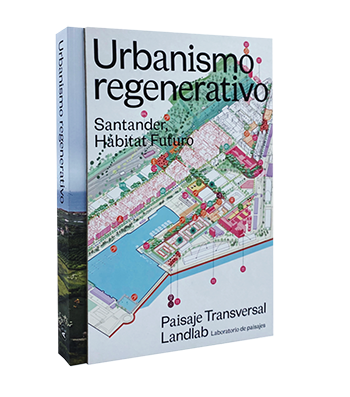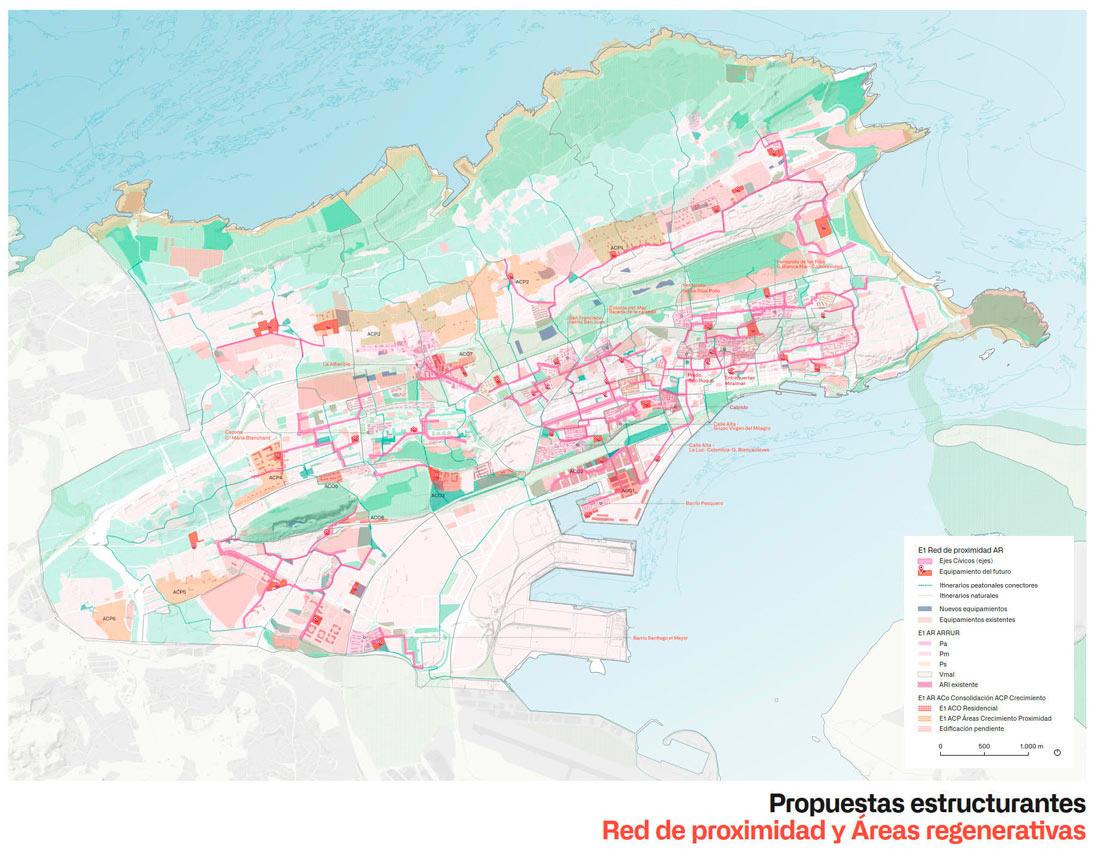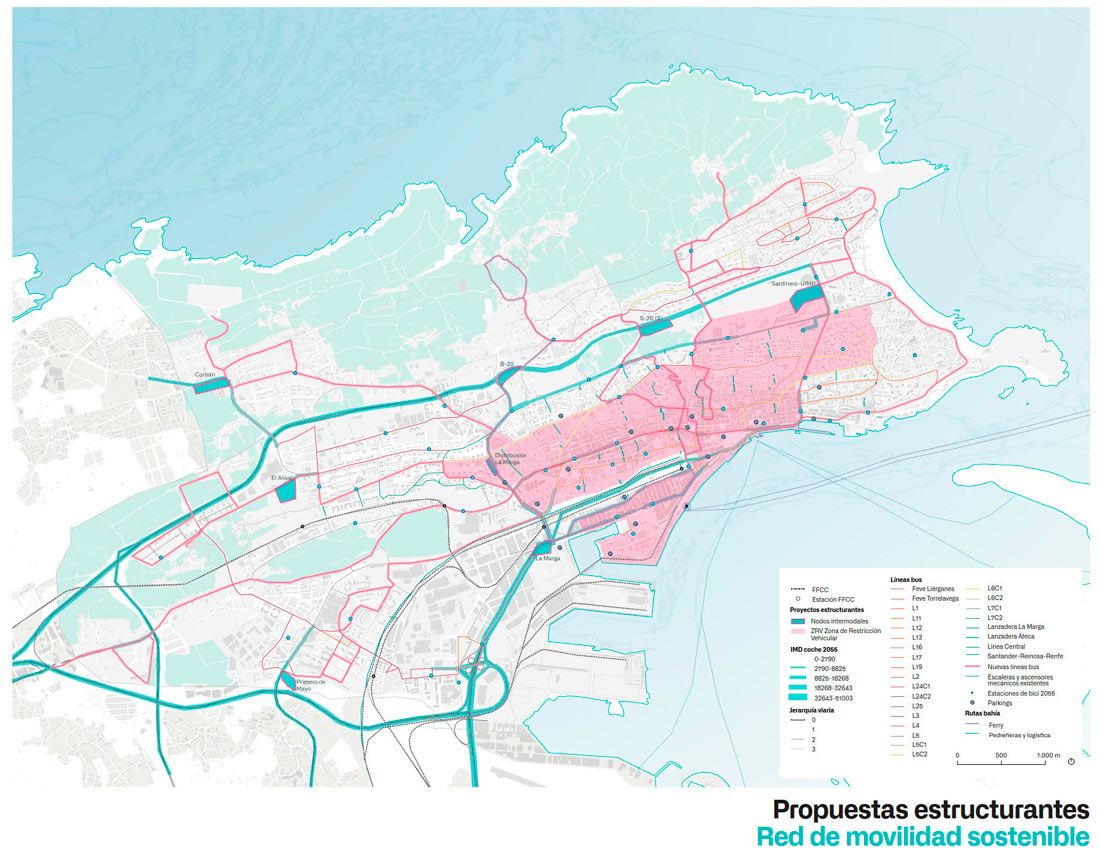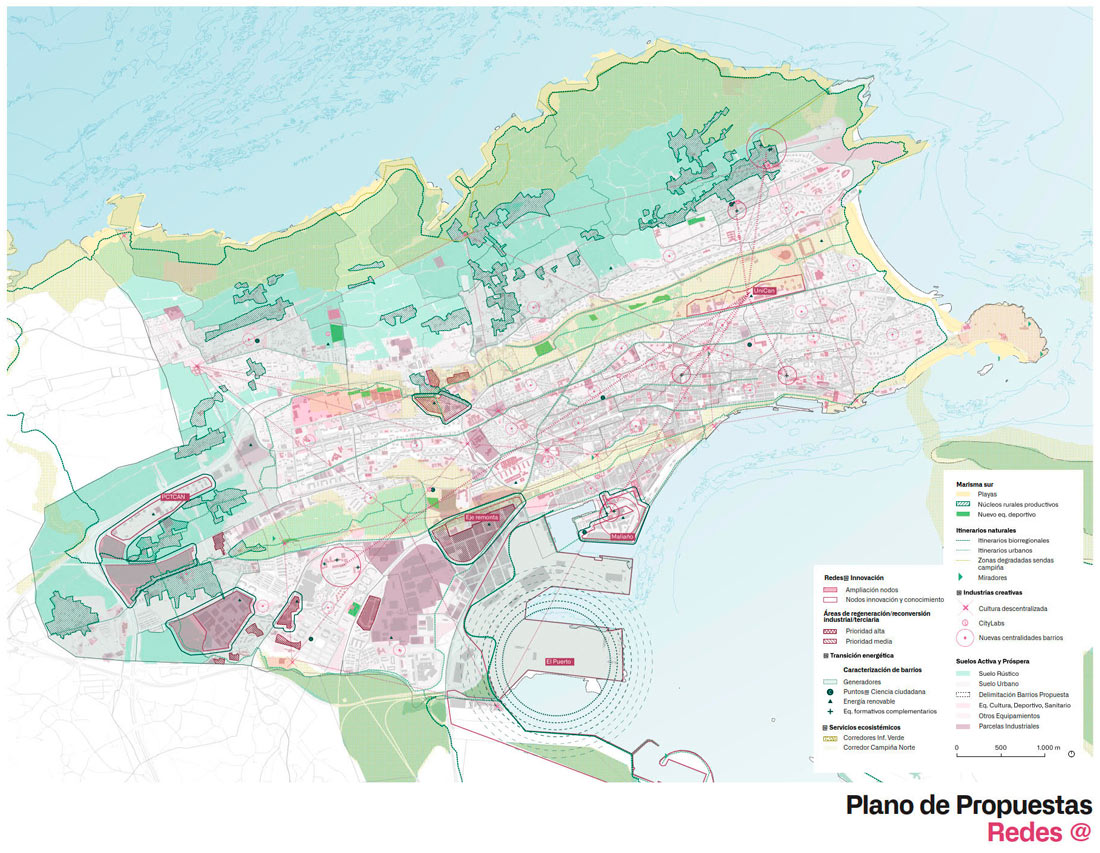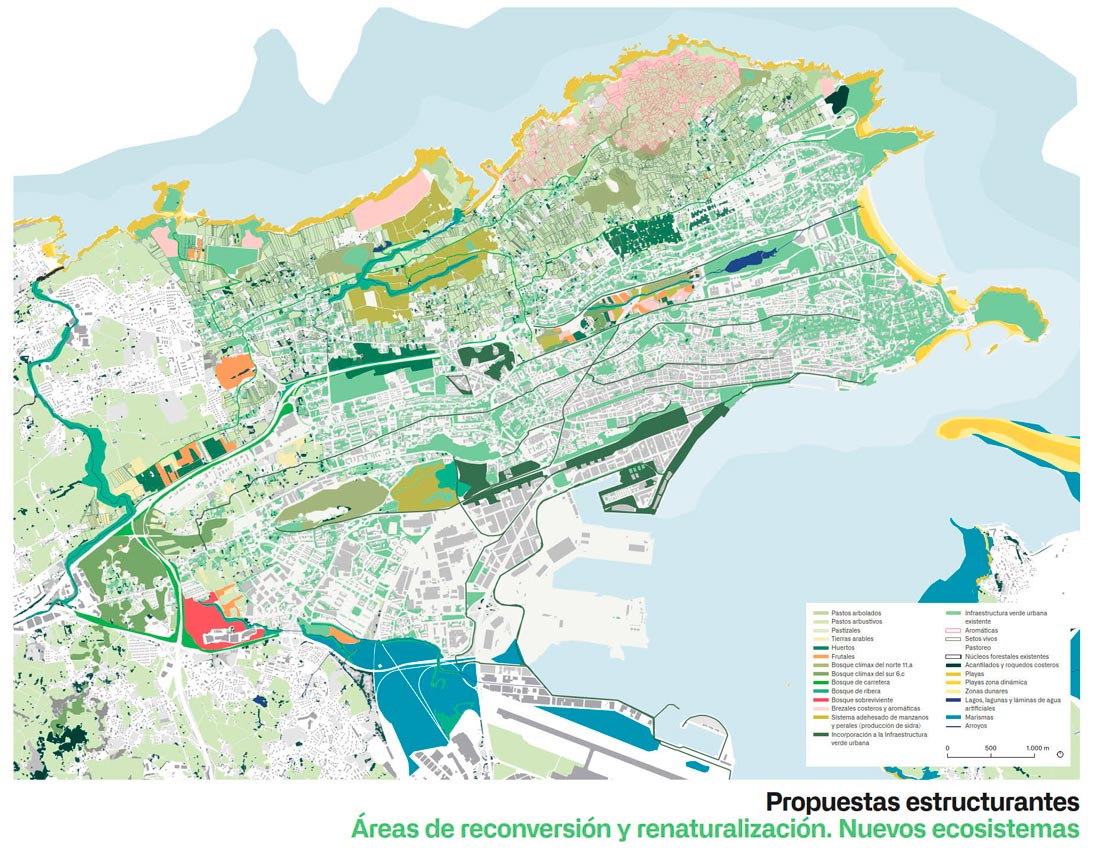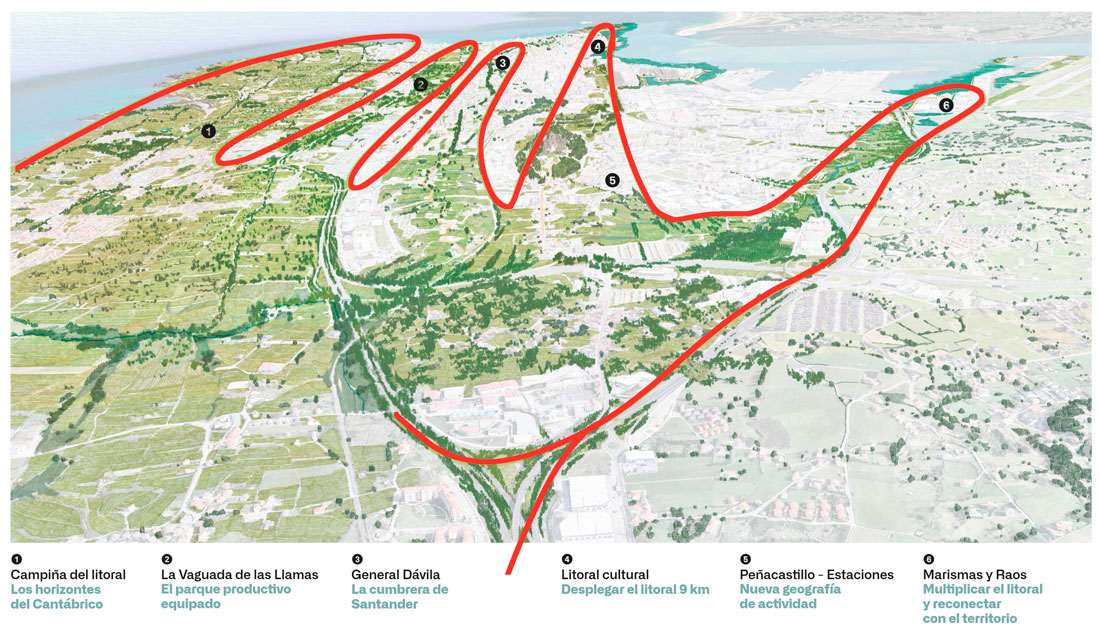Santander, Future Habitat is the new city model for Santander. It is not an urban plan (PGOU) but a preliminary document, a prior obligatory step for the preparation of the plan. The difference between one type of document and another is fundamental. A PGOU is a legal technical instrument that defines the intensities and uses of the city. A city model is much more than that: it is the document that defines the road map of the city in the coming years – in this case to 2055 – in relation to urban planning, but also to mobility, to the green areas and open spaces in the city, the economic activities, the vitality of the neighborhoods, etc. Thus, the City Model can and should be developed through more instruments than just the PGOU.
Santander, Future Habitat is a city model designed specifically for Santander based on an in-depth analysis of its conditions, needs and opportunities and following a process of listening and citizen participation started in 2020 through #ParticipaPGS. It is, therefore, a social opinion based model.
Santander, Future Habitat promotes the transformation of the city through regenerative urbanism: a model that restores balance to the urban territory and makes economic and social prosperity compatible with natural processes. With Future Habitat, by 2055 Santander will be a circular, sustainable, resilient, structured, prosperous, lively and inclusive city – a better city.
The mission of the professional team led by Landlab and Paisaje Transversal is to understand what the city’s inhabitants want for its future, technically analyze all the factors involved, and structure the itinerary to achieve those objectives. It is the first time in the history of Santander that a document of these characteristics has been drawn up: a model made by the city for the city. It is based on the concept of regenerative urbanism. Regenerative urbanism seeks to restore balance to the urban territory, designing systems to permit its adaptation and transformation, moving from a linear and extractive model toward a circular and regenerative one. It implies a change in the ecological, economic and social models around which cities have been developed and defines systems that do not consume available resources but rather ensure compatibility between economic and social prosperity and nature. It is articulated through four strategies:
Vital and inclusive
Santander designs “the 15-minute city” for the neighborhoods of Santander, a model where all daily needs can be met within the distance of a walk or bike ride. The city has a human scale and is welcoming for everyone, with all the necessary services, facilities and activities connected by a network of civic streets and itineraries that directly influence the quality of urban life. This strategy provides the conceptual core of the Neighborhood Plan.
Accessible and connected
Santander facilitates the infrastructures and necessary systems to promote modal diversity, complete decarbonization and progressive mobility. The strategy promotes active, pedestrian and cycling mobility within the city, with friendlier public spaces and multimodal nodes that decongest the urban area and provide collective, efficient, distributed and electric transport.
Active and prosperous
Santander aims to strengthen existing facilities and economic sectors in the city through innovation and the energy transition, implementing a circular and local economy that adapts to future changes. The model updates and adapts the economic sectors that are strategic to Santander due to its natural resources and its location, which can attract investment and professionals.
Sustainable and resilient
Santander defines a strategy that guarantees the success of ecological processes in the city with the goal of regenerating relationships with the natural environment and/or rural areas, both at a municipal and regional level. It also defines proposals for the efficient use and treatment of water, energy, waste and resources, reducing the impact of human activity and ensuring circularity.
Transversal projects for the transformation of the city
The four strategies above are integrated through various projects that define different areas of opportunity for the future of the city of Santander. They are intended to offer an overall vision that amplifies effects and achieves the desired objectives.
Neighborhood Plan
The Neighborhood Plan is a symbiosis between a planning instrument and a tool for citizen participation drawing on regenerative urbanism. The Neighborhood Plan contains an initial proposal for each of the 32 neighborhoods; it has a comprehensive scope that offers each neighborhood a plan to evolve towards the city of proximity through a flexible and open plan that should be debated in discussion spaces with the participation of experts and citizens alike.
